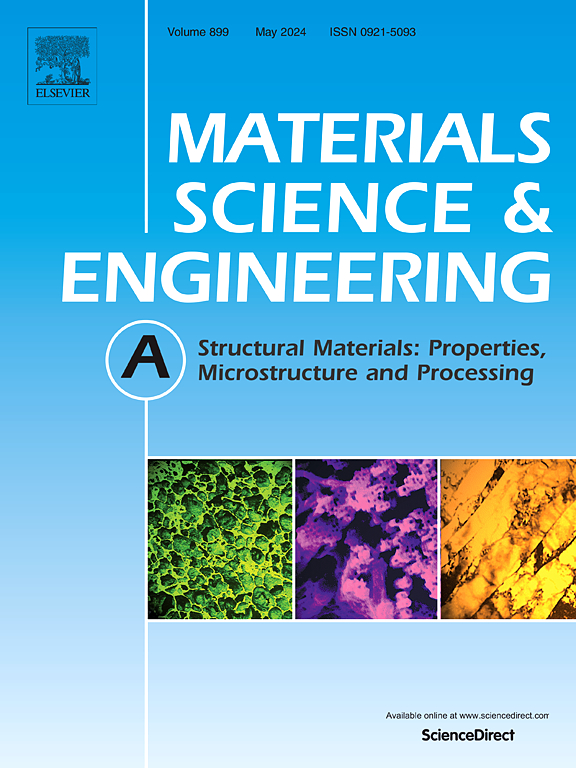纳米结构调谐铜的方向依赖机械强度
IF 7
2区 材料科学
Q1 MATERIALS SCIENCE, MULTIDISCIPLINARY
引用次数: 0
摘要
本研究利用先进的纳米尺度分析技术,研究了纳米孪晶铜(NT-Cu)不同纳米结构的方向依赖性力学性能。在镀铜膜的顶部和横截面表面进行了纳米压痕试验。超细晶+纳米孪晶(UFG + NT) Cu表现出最高的硬度,其顶部和横截面分别达到2.57和2.03 GPa,是粗晶(CG) Cu的两倍多。在细柱晶加纳米孪晶(FCG + NT) Cu中,垂直于双平面的压痕硬度(2.51 GPa)高于平行于双平面的硬度(1.93 GPa)。籽粒平均取向偏差(KAM)随晶粒尺寸的增大而增大,其中(UFG + NT) Cu的最大值为0.61,横截面为0.98。这导致几何必需位错密度(ρGND)最高,分别为2.08 × 1015和3.34 × 1015。我们还计算了每种结构的应变率灵敏度(M)和表观活度体积(V)。发现M值对孪晶边界更敏感,而V值与孪晶间距相关。采用约束层滑移模型对理论预测和实验结果进行了准确的交叉验证。这一全面的研究提高了对影响不同微观结构的铜箔力学性能的基本参数的理解。本文章由计算机程序翻译,如有差异,请以英文原文为准。
Direction-dependent mechanical strength of nanostructure-tuned copper
This study presents the direction-dependent mechanical properties of different nanostructures of nanotwinned copper (NT-Cu), utilizing advanced nano-scale analysis techniques. Nanoindentation tests were performed on the top and cross-sectioned surfaces of the electroplated Cu films. The ultrafine-grained plus nanotwinned (UFG + NT) Cu exhibited the highest hardness, reaching 2.57 and 2.03 GPa from its top and cross-sectioned surfaces, respectively, more than twice that of the coarse-grained (CG) Cu. In fine-columnar-grained plus nanotwinned (FCG + NT) Cu, hardness is higher (2.51 GPa) when the indentation is perpendicular to the twin planes than parallel to the twin planes (1.93 GPa). The measured Kernel average misorientation (KAM) increased with grain sizes, with the (UFG + NT) Cu showing the highest values: 0.61 on the top surface and 0.98 on the cross-sectioned surface. This resulted in the highest geometrically necessary dislocation density (ρGND) at 2.08 × 1015 and 3.34 × 1015. We also calculated strain rate sensitivity (M) and apparent activity volume (V) for each structure. The M value was found to be more sensitive to twin boundaries, while the V value is interdependent with the twin spacing. A confined layer slip model was adopted for an accurate cross-verification of theoretical predictions alongside experimental results. This comprehensive study enhances the understanding of essential parameters that contribute to the mechanical performance of Cu foils with various microstructures.
求助全文
通过发布文献求助,成功后即可免费获取论文全文。
去求助
来源期刊

Materials Science and Engineering: A
工程技术-材料科学:综合
CiteScore
11.50
自引率
15.60%
发文量
1811
审稿时长
31 days
期刊介绍:
Materials Science and Engineering A provides an international medium for the publication of theoretical and experimental studies related to the load-bearing capacity of materials as influenced by their basic properties, processing history, microstructure and operating environment. Appropriate submissions to Materials Science and Engineering A should include scientific and/or engineering factors which affect the microstructure - strength relationships of materials and report the changes to mechanical behavior.
 求助内容:
求助内容: 应助结果提醒方式:
应助结果提醒方式:


